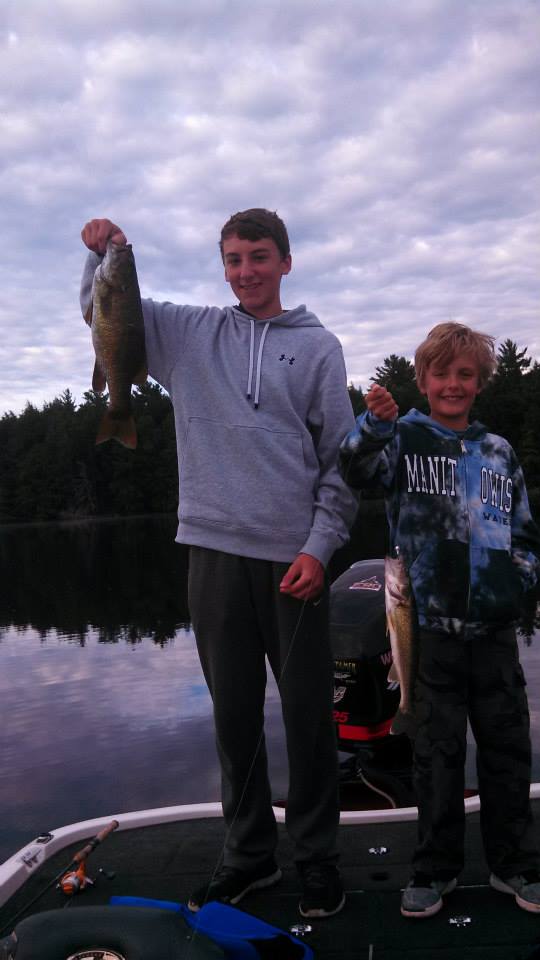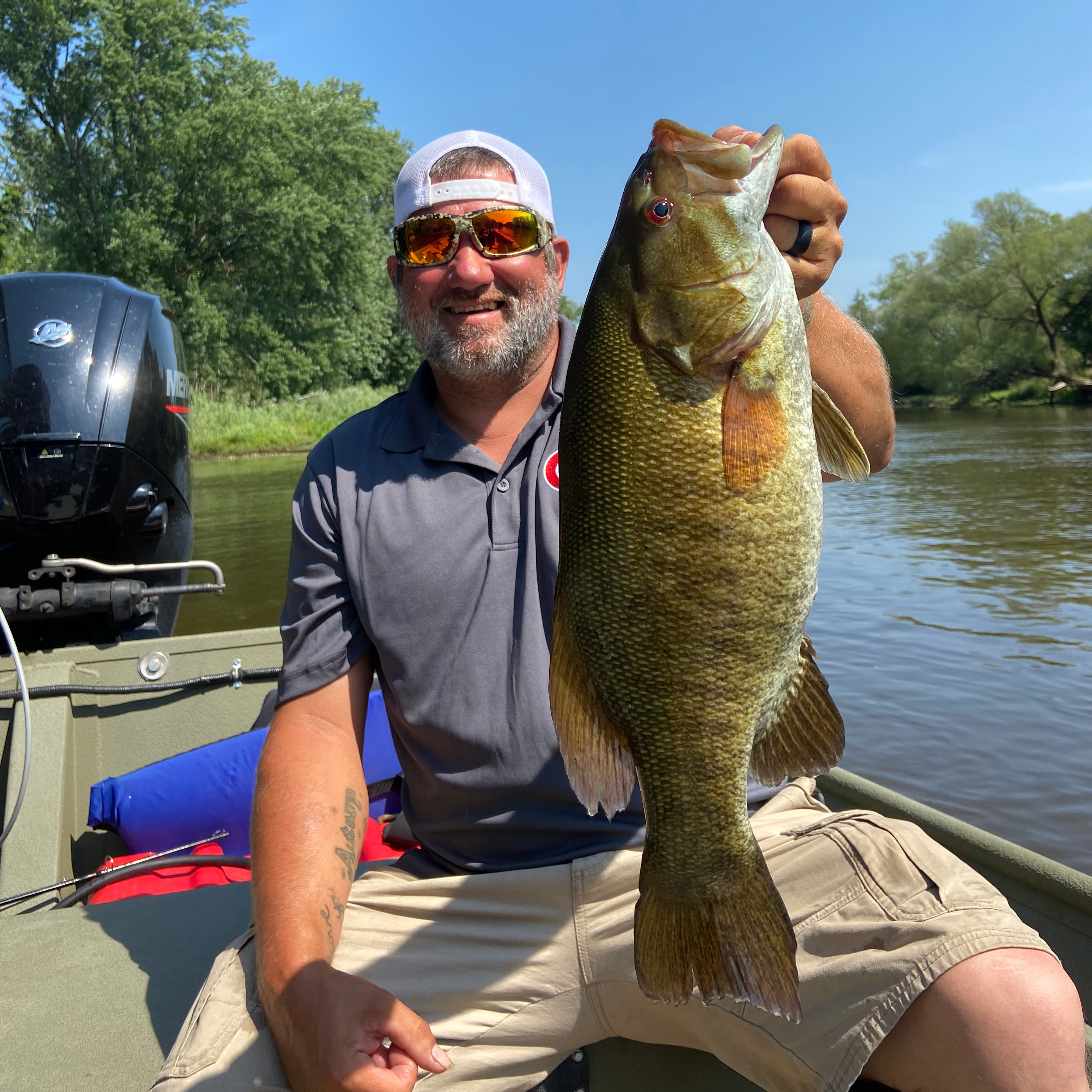Fish Like A Pro With Captain Chad
Inshore, Nearshore, Flats in Mastic
Inshore Charter
River, Lake Fishing in Stanwood
Ice Fishing Michigan
River, Lake Fishing in Eagle River
1/2 Day Musky Fishing
Northern Wisconsin Fishing
River, Lake Fishing in Eagle River
Hard Core Marathon Musky Day
River, Lake Fishing in Stanwood
Full Day Fishing
River, Lake Fishing in Stanwood
Half Day Fishing
River, Lake Fishing in Eagle River
Full Day Musky Fishing
SW Virginia Weekend River Trips
We started Captain Experiences to make it easy to book fishing and hunting guides around the world. With over 2,000 Damn Good Guides, our platform makes finding and booking a trip seamless. Head here to check out our trips.
Everything You Need to Know About Tiger Muskie
The incredibly aggressive and carnivorous tiger muskie is both an achievement and a trophy for anglers in cooler climates. Tiger muskies are difficult to catch because they’re large powerful fish that have frustratingly fickle feeding habits making them one of the most sought after freshwater gamefish in America.

What is a Tiger Muskie
The tiger muskie is the hybrid offspring of the muskellunge and northern pike. Tiger muskies are very rare in nature because they’re sterile and can’t reproduce on their own but due to their stout genetics, they grow larger faster than either of their parent species. Thanks to their popularity among anglers they are often stocked by fish and game organizations.
The tiger muskie can grow to over four feet long and weigh more than 30 pounds, considering many of the anglers that hook one are using tackle made for bass or perch, landing one is very difficult. Another draw of catching a tiger muskie is the beautiful markings down the length of their body. Irregular olive-colored vertical bars and spots distinctly mark the sides of a tiger muskie that otherwise have light yellow bodies.
Tiger Muskie Fishing
Muskie are known as “the fish of 10,000 casts” which is mainly due to two reasons. First, muskie and tiger muskie are rare because they’re large apex predators so naturally fewer of them can occupy a body of water. Second, both fish are incredibly wary of bait, which means even if you manage to find one there’s a good chance they just won’t bite. The best approach to catching a muskie or tiger muskie is to make as many casts and cover as much water as you can.

When fishing for muskie using live bait is effective but artificial baits have become more popular. Using live bait for muskie is tricky because the baitfish used are often very large and the bait needs to stay alive a long time so it’s important to make sure the rigging is perfect. The best lures for muskie fishing fall into one of these categories: jerkbaits, crankbaits, surface baits, and both types of spinnerbaits.
Great muskie lures need to attract a lot of attention with a flashy and/or noisy presentation while moving quickly to cover water. Muskie are known for following lures back to the boat and with a fish this elusive, it’s crucial to work your bait all the way in. A recently discovered technique of working your bait back to the boat then dragging the lure in a large figure-eight pattern to maximize the chances of getting a bite has become known as the muskie figure-eight.

Muskie Fishing Trips
Fishing for muskie has a bigger learning curve than most other species but a guide can get you in on the action right away. Muskie guides have years of experience catching these fish which will help reduce some of the time and frustration that is usually part of learning a new species. If you want to take your shot at catching one of the biggest and most elusive freshwater fish, check out our muskie trips.
Joey Butrus
Updated on June 22, 2023

April 15, 2022

July 1, 2024

June 22, 2022

October 26, 2020

January 19, 2021
Related Articles
June 27, 2022
June 20, 2024
August 1, 2022
Featured Locations
- Fishing Charters Near Me
- Austin Fishing Guides
- Biloxi Fishing Charters
- Bradenton Fishing Charters
- Cabo San Lucas Fishing Charters
- Cancun Fishing Charters
- Cape Coral Fishing Charters
- Charleston Fishing Charters
- Clearwater Fishing Charters
- Corpus Christi Fishing Charters
- Crystal River Fishing Charters
- Dauphin Island Fishing Charters
- Daytona Beach Fishing Charters
- Destin Fishing Charters
- Fort Lauderdale Fishing Charters
- Fort Myers Fishing Charters
- Fort Walton Beach Fishing Charters
- Galveston Fishing Charters
- Gulf Shores Fishing Charters
- Hatteras Fishing Charters
- Hilton Head Fishing Charters
- Islamorada Fishing Charters
- Jacksonville Fishing Charters
- Jupiter Fishing Charters
- Key Largo Fishing Charters
- Key West Fishing Charters
- Kona Fishing Charters
- Lakeside Marblehead Fishing Charters
- Marathon Fishing Charters
- Marco Island Fishing Charters
- Miami Fishing Charters
- Montauk Fishing Charters
- Morehead City Fishing Charters
- Naples Fishing Charters
- New Orleans Fishing Charters
- New Smyrna Beach Fishing Charters
- Ocean City Fishing Charters
- Orange Beach Fishing Charters
- Panama City Beach Fishing Charters
- Pensacola Fishing Charters
- Pompano Beach Fishing Charters
- Port Aransas Fishing Charters
- Port Orange Fishing Charters
- Rockport Fishing Charters
- San Diego Fishing Charters
- San Juan Fishing Charters
- Sarasota Fishing Charters
- South Padre Island Fishing Charters
- St. Augustine Fishing Charters
- St. Petersburg Fishing Charters
- Tampa Fishing Charters
- Tarpon Springs Fishing Charters
- Venice Fishing Charters
- Virginia Beach Fishing Charters
- West Palm Beach Fishing Charters
- Wilmington Fishing Charters
- Wrightsville Beach Fishing Charters

































